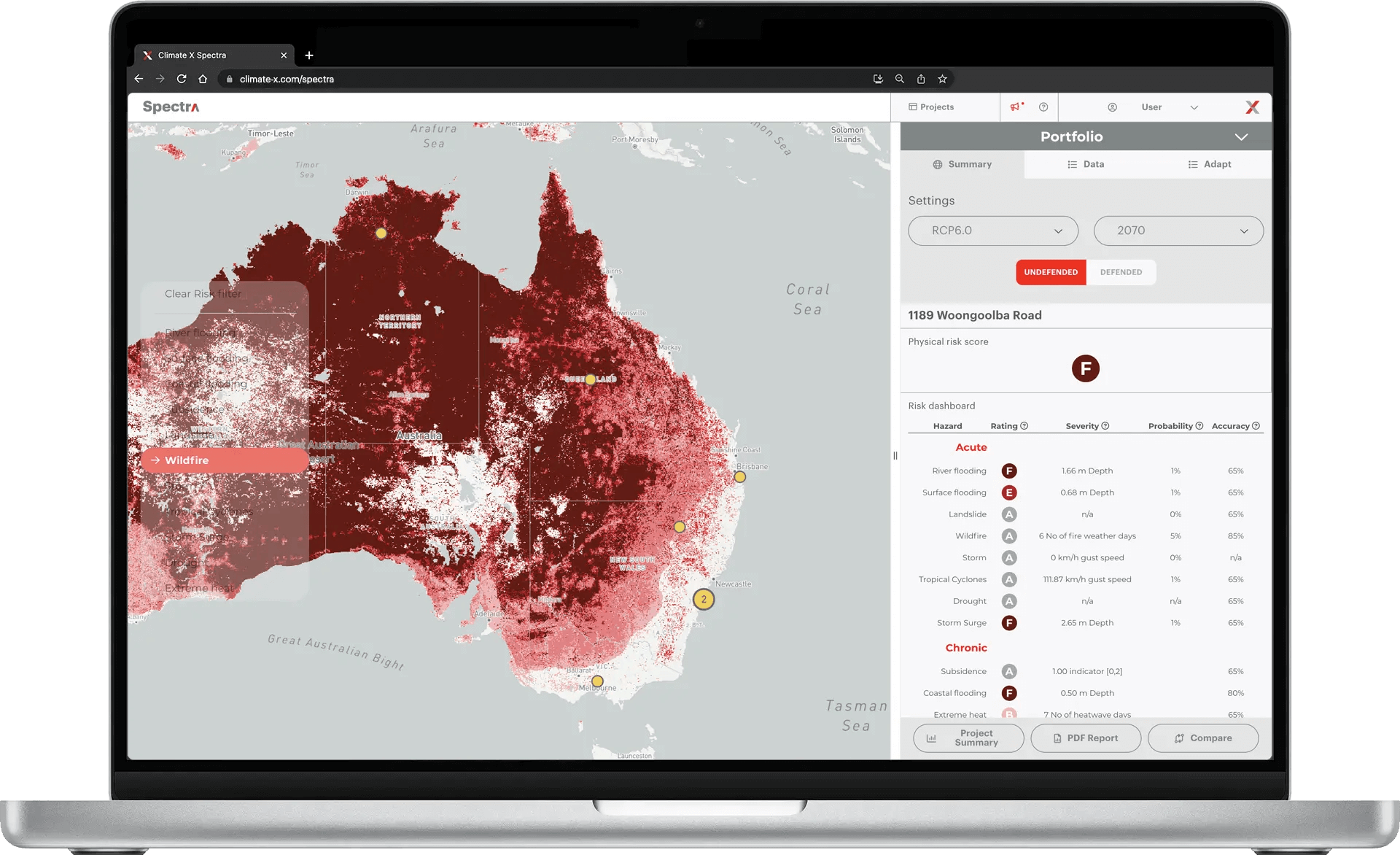This was the year in which the promises of financial regulators and standard-setters on climate risk management crystallized into action.
From the introduction of globally applicable climate disclosure standards to the publication of extensive climate risk management principles, guidance, and requirements from major central banks, 2023 was full of important developments that financial risk professionals could not afford to ignore.
Here’s our rundown of some of the most significant moves in climate-related financial regulation and supervision.
US and Canada Step up Climate Risk Oversight
In 2023, US authorities strived to make up for lost time on climate-related financial supervision.
The Federal Reserve launched its first climate scenario analysis exercise, designed to assess Wall Street banks’ resilience to climate-related physical and transition risks, including extreme hurricanes and disruptive climate policies.
The exercise was also intended to gather data on banks’ climate risk management practices. The six largest US banks — Bank of America, Citi, Goldman Sachs, JP Morgan, Morgan Stanley, and Wells Fargo — participated in the exercise.The Fed pledged to release aggregated data from the exercise when it concludes, information that should illuminate the state of climate risk management at the top of the country’s banking system.
Together with the Federal Deposit Insurance Corporation (FDIC) and Office of the Comptroller of the Currency (OCC), the Federal Reserve also published final climate risk management principles for large financial institutions.
The principles set out a high-level framework for managing climate-related financial risks among banks holding over US$100bn in total assets, covering governance, risk policies, procedures, and limits, strategic planning, reporting, and scenario analysis.
The principles also explain how climate-related financial risks can be integrated into the management of traditional risk areas such as credit, market, liquidity, operational, and legal risks.

Out west, California flashed its green credentials by passing two laws that force corporations and financial institutions doing business in the Golden State to disclose their greenhouse gas (GHG) emissions and climate risks and opportunities. However, at the national level companies are still waiting for a final climate risk disclosure rule out of the Securities and Exchange Commission (SEC), which would require all public companies to report climate-related disclosures.
Northward, Canada tuned its regulatory instruments to resonate with the times. The Office of the Superintendent of Financial Institutions (OSFI) etched out climate risk management guidelines for federally regulated financial institutions, which includes demanding new expectations on climate scenario analysis, capital and liquidity adequacy in relation to climate risks, and climate reporting.
Europe Spotlights Climate Risks to Banking Sector
The European Central Bank (ECB) continued to be in the vanguard of climate risk regulation in 2023. The institution’s latest climate stress test concluded in September.
This set out to measure the financial resilience of the European banking sector against an array of climate transition scenarios. The disparity in outcomes is stark, most notably under a scenario where the transition to sustainability lags – here, credit risk balloons, threatening financial stability.
In December, the ECB published the findings of the 2023 Supervisory Review and Evaluation Process (SREP), revealing that 12% of major banks had to address deficiencies and omissions around climate risk management. Gaps in strategic and operational plans, as well as shortcomings in climate knowledge among management, were highlighted as common issues.

The ECB also promised to crack down on the EU’s climate laggards. Banks that fail to meet the regulator’s supervisory expectations on climate and environmental risk management by the end of 2024 will face enforcement actions, a top official said in a December speech. These include “penalty payments” for each and every day they are out of compliance.
Meanwhile, the European Banking Authority (EBA) took major strides toward incorporating climate and environmental risk in the bank capital rulebook. An October report laid out the watchdog’s recommendations for “targeted enhancements” to the Pillar 1 framework, which would require banks to consider climate and environmental risks in due diligence assessments, internal stress testing programmes, and credit ratings produced by external rating agencies, among other things.
UK Regulators Flex Muscles
UK authorities showed they were ready to get tough on financial institutions that failed to meet climate-related requirements in 2023.
Significantly, in September The Pensions Regulator (TPR) issued its first-ever fine against a pension scheme for failing to produce a timely climate risk and opportunity report in line with 2021 rules.
The ExxonMobil Pension Plan was docked £5,000 for this infraction, a disciplinary action that demonstrates the UK’s determination to hold financial entities accountable for their climate performance. TPR investigated the published climate change reports of all 80 pension schemes covered by the rules this year to ensure compliance – sending a message to institutions that there’s no way to dodge their reporting requirements.
Meanwhile, the Bank of England (BoE) investigated if and how the UK’s capital regime should be amended to factor in climate risks, coming to a different conclusion than the EBA.
In a March report, the Bank said that although there is uncertainty over whether banks and insurers have enough capital to weather climate shocks, the current evidence does not justify policy changes that would alter the existing capital framework. However, the BoE pledged to conduct further analysis and take steps to ensure companies address climate risk “capability gaps.”
In addition, Sarah Breeden – the BoE’s executive director for financial stability – warned in April that climate risks are continuing to build up in the UK economy, despite progress improving banks’ and insurers’ climate governance, strategy, and risk management. To counter these risks, she said financial institutions had to be equipped with “forward-looking information from the real economy to allocate capital effectively and mobilise finance at scale.”
Collectively, we need to equip the financial sector with forward-looking information from the real economy to allocate capital effectively, and mobilise finance at scale."
Sarah Breeden, Deputy Governor of the Bank of England for Financial Stability
Asia, Oceania Get Serious on Climate Analytics
Down under, the Australian Prudential Regulation Authority (APRA) promised to conduct a Climate Vulnerability Assessment for general insurers, following a successful exercise testing the country’s largest banks against climate-related physical and transition stressors.
The Reserve Bank of New Zealand (RBNZ) matured its approach to climate-related financial risks by issuing draft climate risk management guidance for financial institutions. It includes recommendations that firms integrate climate with their broader risk management frameworks, develop climate scenario analysis and stress testing capabilities, and embrace quantitative risk metrics.
The RBNZ also published the findings of its first climate stress test of New Zealand banks’ home loan portfolios. The test estimated the potential impacts of coastal flooding, sea-level rise, and rainfall-induced flooding on banks’ capital reserves and overall resiliency.
In Singapore, the country’s central bank conducted a climate stress test which estimated that banks and insurers would “incur significantly higher financial losses” under a disorderly transition than a smooth one. Going forward, the Monetary Authority of Singapore (MAS) promised to step up efforts to “improve internal and industry capabilities in climate risk assessments”, including physical risk modelling capabilities.
Global Cooperation on Climate Scenarios Continues
Central banks and supervisors churned out a wealth of climate scenarios, risk assessment tools, and guidance for financial institutions in 2023.
The Network for Greening the Financial System (NGFS) continued to build out its suite of climate scenarios for financial authorities, publishing a fourth vintage of its long-term scenarios in November and taking its first steps toward developing short-term scenarios with a conceptual note released in October.
The latter workstream should lead to the development of three-to-five year scenarios that explore the near-term impacts of the net-zero transition and the consequences of severe natural disasters. The group also crafted a conceptual framework for developing scenarios that assess nature-related economic and financial risks.
Meanwhile, the Financial Stability Board (FSB) kept up a steady cadence of reports, surveys, and updates on climate risk and regulation. The panel of global regulators also formed a Transition Plans Working Group in July to enhance understanding of the role transition plans play in addressing climate risks and supporting decarbonization.
As part of its annual progress report on addressing climate-related financial risks, the FSB stressed the importance of forward-looking metrics and integrating climate scenario analysis into financial vulnerability assessments.
Last but by no means least, the International Sustainability Standards Board (ISSB) unveiled its first set of sustainability and climate-related standards in June. The Board intends for these standards to become a “global baseline” for the disclosure of environmental, social, and governance risks and opportunities.
The standards build on the recommendations from the TCFD and other voluntary reporting frameworks, such as the Sustainability Accounting Standards Board (SASB) and the Integrated Reporting Framework. Corporate and financial institution disclosures produced according to the ISSB standards are supposed to complement financial statements, empowering investors to make better informed decisions.
Significantly, in July the International Organization of Securities Commissions (IOSCO) – which represents some 130 regulators globally – endorsed the standards, which may speed up their adoption by financial authorities worldwide.
Final Thoughts: Steering Through a Regulatory Deluge
Regulatory developments in 2023 indicate that financial authorities want institutions’ climate-related financial risk management practices to be robust, transparent, and comprehensive.
It has also become increasingly clear that regulators will enforce their climate-related expectations and guidance, meaning laggards have to up their game in 2024 if they are to avoid penalties. As these regulations crystallize and risk management exercises step up, financial institutions are advised to proactively adjust by enhancing their climate risk management strategies and refining their climate reporting processes.
Sources
- APRA (2023), APRA Corporate Plan 2023-24.
- APRA (2023), APRA Releases Results of Inaugural Climate Vulnerability Assessment.
- Bank of England (2023), Report on Climate-Related Risks and the Regulatory Capital Frameworks.
- Bank of England (2023), Sarah Breeden Speech at Chapter Zero Anniversary.
- EBA (2023), EBA Recommends Enhancements to Pillar 1 Framework to Capture.
- ECB (2023), "Faster green transition would benefit firms, households and banks, ECB economy-wide climate stress test finds".
- Federal Reserve (2023), Climate Scenario Analysis Exercise Instructions.
- Federal Reserve (2023), Press Release "Agencies issue principles for climate-related financial risk management for large financial institutions".
- FSB (2023), Publication "FSB Roadmap for Addressing Financial Risks from Climate Change Progress report".
- IFRS (2023), ISSB Issues IFRS S1 IFRS S2.
- IOSCO (2023), Endorsement Decision Document for Sustainability-related disclosures.
- Legislature of California (2023), Bill Text SB253.
- Legislature of California (2023), Bill Text SB261.
- MAS (2023), Financial Stability Review 2023.
- NGFS (2023), Climate Scenarios Phase IV - November 2023.
- NGFS (2023), Conceptual Note on Short-term Climate Scenarios.
- NGFS (2023), Technical Document on Nature-Related Scenarios.
- OSFI (2023), Draft Guideline B-15.
- RBNZ (2023), Feedback Sought on Guidance for Managing Climate-Related Risks.
- SEC (2022), Press Release "SEC Proposes Rules to Enhance and Standardize Climate-Related Disclosures for Investors"






